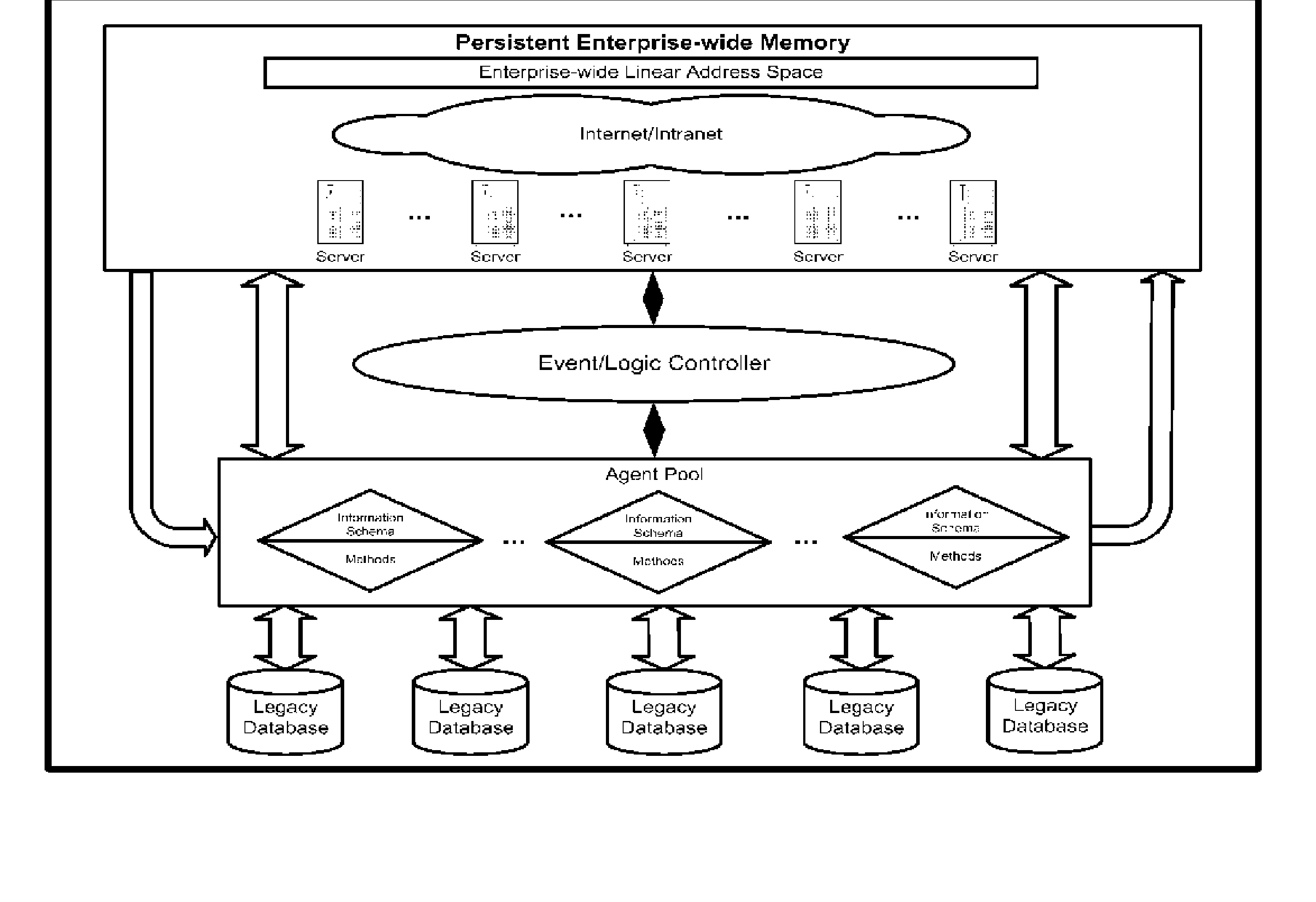Virtual Enterprise Computer
- Summary
- Abstract
- Description
- Claims
- Application Information
AI Technical Summary
Benefits of technology
Problems solved by technology
Method used
Image
Examples
Embodiment Construction
[0087] The Virtual Enterprise Computer is a model of a single logical computer running all the programs and managing all the intellectual assets of a business enterprise including its virtual components (partners and vendors). It is a model which greatly simplifying the implementation and management of enterprise automation solutions.
[0088] The Virtual Enterprise Computer physical embodiment is a TCP / IP network of UNIX-based and / or Microsoft Windows-based computers operating over private intranets and / or Internet.
[0089] Each computer in the network runs an object database in which data in each computer is identified by a unique identification code. Each object database maintains its own unique object identifiers.
[0090] The object databases in all the computers are integrated into single a persistent enterprise-wide store through the use of a Persistent Enterprise-wide Addressing Space (PEAS) schema that uniquely identifies the location of all data assets within the VEC. PEAS main...
PUM
 Login to View More
Login to View More Abstract
Description
Claims
Application Information
 Login to View More
Login to View More - R&D
- Intellectual Property
- Life Sciences
- Materials
- Tech Scout
- Unparalleled Data Quality
- Higher Quality Content
- 60% Fewer Hallucinations
Browse by: Latest US Patents, China's latest patents, Technical Efficacy Thesaurus, Application Domain, Technology Topic, Popular Technical Reports.
© 2025 PatSnap. All rights reserved.Legal|Privacy policy|Modern Slavery Act Transparency Statement|Sitemap|About US| Contact US: help@patsnap.com


